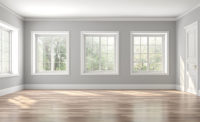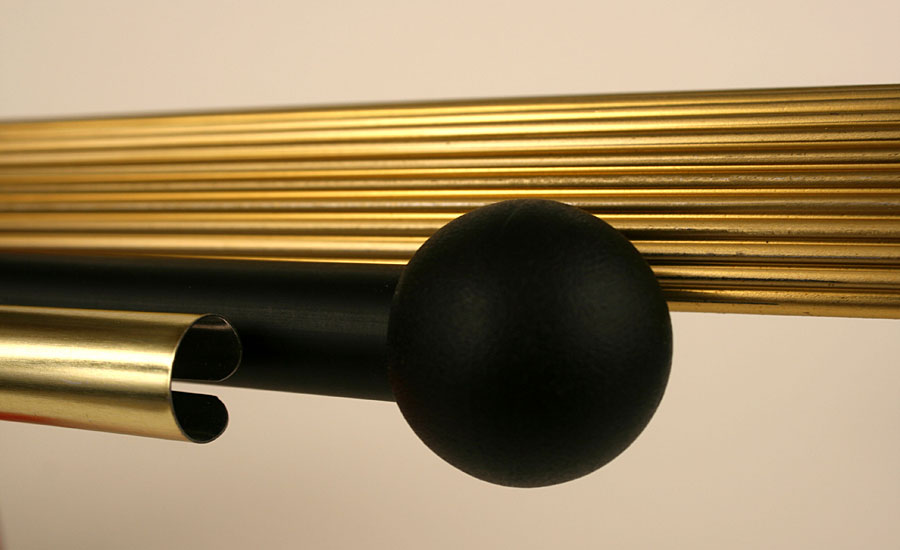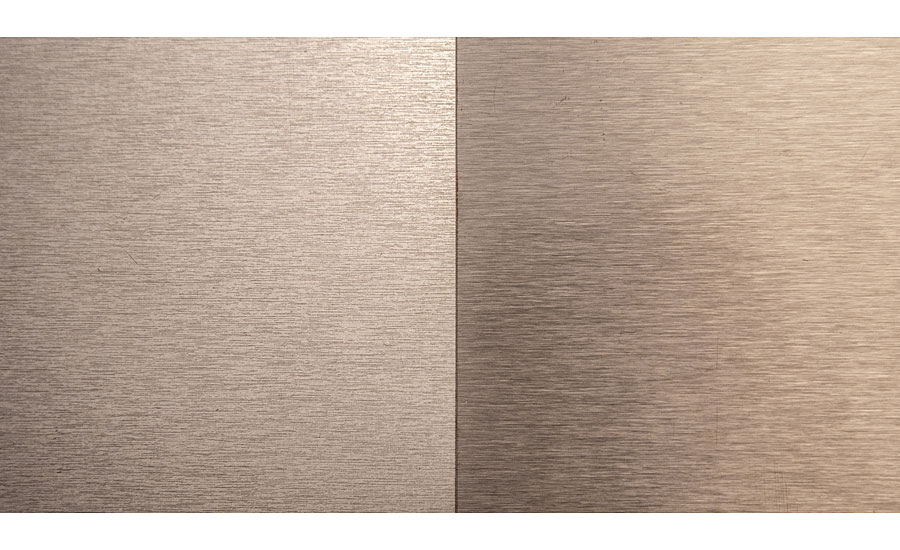High-Performance Industrial Finishes Simulate Stainless Steel, Brass and Copper at a Fraction of the Cost






Stainless steel is a premium material used in the manufacturing of a variety of products, but its high price has made it unaffordable to many customers. While simulated stainless steel laminates have lowered the cost of achieving the “look of stainless steel”, industry innovation has made attaining a stainless steel finish much more affordable.
In one such innovative approach, a high-performance industrial finish – comprised of a protective coating, paired with a special substrate – is adhered to a variety of lower-cost metals. The durable combination results in the brilliance of a polished and brushed stainless steel look. It also meets or exceeds a battery of domestic appliance tests, such as that for kitchen and laundry appliances and resists scratches, stains, chemicals, and fingerprints.
In the appliance sector, for instance, this enables larger designer appliances – including refrigerators, freezers, ovens, dishwashers, and washing machines as well as smaller items such as microwave ovens, ranges, and fume hoods – to continue to have products which look like stainless steel but at a significantly lower cost.
A similar approach is also being used by manufacturers in other markets to simulate a wide range of brass and copper coated products ranging from blinds and curtain rods to decorative food containers and tobacco tins as well as cosmetic and mason jar lids.
A Cost-Effective Alternative
When challenged by an OEM to come up with an affordable alternative to costly stainless steel that also met the appliance industry’s functional requirements, one innovator found a way.
“The simulated, stainless steel finish is basically a durable protective coating system which includes a printed stainless steel pattern on a variety of substrates, which can include tinplate, cold rolled steel or other metals depending on performance requirements, which provides the underlying metallic shine independent of the substrate base,” explains Dan Chin, CTO of Universal Chemicals & Coatings (Unichem), a company that specializes in custom adhesives and coatings used in the coil coating process.
When implemented in this way, as part of the company’s uniPON line of interior decorative and performance coatings, the simulated stainless steel coating passed a wide range of appliance industry tests. This includes tests for water vapor, detergent and grease resistance, stain resistance to over 20 household chemicals, and ASTM’s B117 Salt Corrosion test of 750 hours.
By varying the coating color from clear to opaque in a variety of tints, the coating can also be made to look like brass, copper, brushed nickel, or antique bronze, says Chin.
As an example, he explains how to achieve a brass finish. “A brushed tinplate has a fairly bright finish, so applying a thin transparent gold or brass colored coating over the tinplate,” he says. “Enables you to pick up the brightness of the tinplate and get the right color that simulates a natural brass-plated or brushed brass product.”
Whether simulating stainless steel, brass, or another high-end metal, however, the process usually saves the OEM and consumer a significant sum, while offering a high quality looking product.
“The simulated stainless steel and other simulated coatings are often less expensive than the comparable laminate,” says Chin. “That’s because laminates are usually in the four to eight mil range in thickness, while the coatings are well under a mil. So, the material cost would be less. Since it is applied efficiently in a high-speed coil coating process, it is also less expensive to apply the coating than a laminate, whether on a coil-line or in-house.”
Because the simulated metal coatings with their accompanying substrates are formable, and can be made ductile enough to even withstand deep draw forming, they can conform to virtually any appliance or product configuration.
When utilized with appliances, the simulated stainless steel coatings maintain the ability to magnetically hold artwork, so in both appearance and function retain much of the charm of the premium metal, but at a significantly lower cost.
The simulated metal coatings can also achieve the two-tone metal look popular on clothing racks and some furniture, a black coating with gold beneath, without resorting to more costly powder coating. Opaque coatings can replace costlier laminates, such as those used with electronics like cable or set-top boxes.
Such coatings can be also be made compliant with the FDA Code of Federal Regulations Sec. 175.300, so can be safely used as the food-contact surface. This enables their use in a variety of decorative food containers and tins from holiday to popcorn to tobacco.
“The simulated metal coatings are very versatile in their application,” says Chin. “It is just a matter of putting all the parameters together to optimize the performance of what the manufacturer wants to achieve.”
One caveat for OEMs and manufacturers looking to explore using these high-performance coatings to simulate premium metal finishes: it takes expertise to get it right, so work with an experienced partner.
As an example, Chin points to the use of tinplate, which is one of the most popular metals used with this process due to its inherent brightness and reasonable cost.
“While tinplate is a popular substrate, it is not easy to adhere to it,” says Chin. “You have to specifically formulate the coating for the tin plate application or you can have all kinds of problems with adhesion. There are limitations on process temperatures because the tinplating reflows at temperatures above 410 F.” For cases where the cost of tin plate would also add to the cost, for the simulated stainless look, standard cold rolled steel can be used since the coating system covers the metal surface.
Protecting the Bottom Line
Some managers at OEMs and manufacturers may be inclined to utilize stainless steel laminates or brass and copper coated products because of their familiarity with such processes. However, those who take advantage of the outstanding capabilities of high-performance simulated stainless steel or premium metal coatings will provide a much larger segment of consumers with topnotch aesthetics and function at a much more affordable price.
For more information, visit www.unicheminc.com.
By Unichem
Looking for a reprint of this article?
From high-res PDFs to custom plaques, order your copy today!









